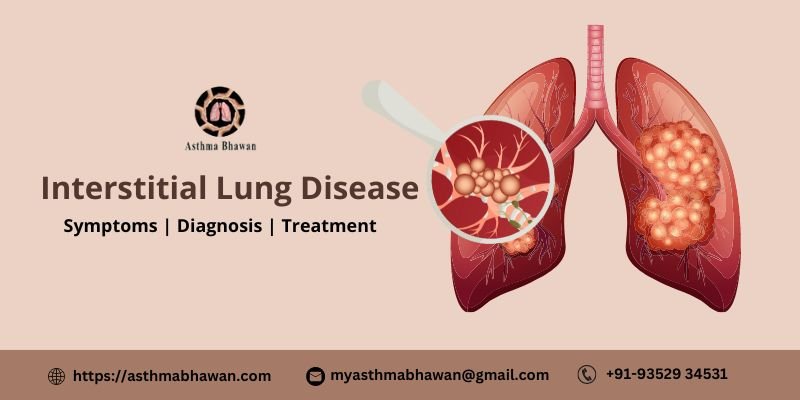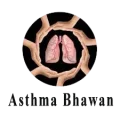
Interstitial lung disease(ILD) is a broader term for those diseases that can scar your lungs and can cause inflammation in them. Such disease can cause long-lasting effects on your lungs and can put us on medication for a long time if ignored. Although, there are medicines available for ILDs now and are combined with different therapies but the damage caused by such diseases to our lungs is irreversible.
The area of our lungs that is most affected by the ILDs are the alveoli and the blood vessels that supply blood to that region. Thereafter, the immediate effects are seen in the oxygen levels of our body. Read the full article to more about Interstitial Lung Disease(ILD) – Symptoms, Diagnosis, and Treatment.
Symptoms of Interstitial lung disease(ILD)
Symptoms of ILD(Interstitial Lung Disease) include:
- Dry Cough without phlegm
- Fatigue, extreme tiredness
- Chest congestion
- Difficulty in breathing(SOB) with any physical activity
- Discomfort in the chest
- Loss of appetite
- Unexplained weight loss
- Bleeding in the lungs
Interstitial lung disease Diagnosis | Asthma Bhawan
The most important part before providing any sort of treatment by a health expert is to figure out exactly the root cause of the visible symptoms that explains the underlying disease. Several tests can help to rule out the possibility of the actual disease. Asthma Bhawan hospital is known for the Best ILD Diagnosis in India.
The diagnostic tests for Interstitial Lung Disease include:
Blood Tests
To check the levels of certain proteins that can be elevated in inflammatory diseases or autoimmune diseases, blood tests can provide a clear picture.
Checking The Oxygen Levels
To check the levels of oxygen in our blood, an oximeter, a small device that is placed on the fingers is used. This device measures the percentage saturation of oxygen in our blood. It is first checked when the person is at rest to check the normal levels.
CT Scan
A computerized tomography scan is an imaging test to figure out Interstitial Lung Disease(ILD). The scanners give a clear picture of our lungs to check whether or not they are working efficiently if any part of the lungs is damaged or the extent of the damage if there is any. The CT scan tests use a computer to produce the cross-sectional images of the body part(s) which is/are scanned. These are also helpful in checking the scarred areas of the lungs.
PFT (Pulmonary Function Tests)
These include spirometry and diffusion capacities. It requires the patient to exhale forcefully through a tube that is connected to a machine. This machine measures the amount of air you can hold in your lungs.
Bronchoscopy
This test is performed to analyze the lung tissues. A small tissue sample is extracted by inserting a thin tube through the mouth or nose into your lungs.
Interstitial Lung Disease ICD-10 code J84. 9
To breathe, we need the lungs. The respiratory system transports oxygen to the lungs when we breathe. The air sacs in the lungs serve as the respiratory system’s endpoint. Pulmonary alveoli are where oxygen enters the circulation (air sacs). Between the lung’s airways and air sacs, there is supporting tissue. This supporting tissue is also called “connective tissue”. The connective tissue in your lungs is diseased.
The WHO classifies Interstitial Lung Disease ICD-10 code J84. 9, unspecified under the heading “Diseases of the respiratory system.”
Interstitial Lung Disease Treatment
After the diagnosis of the disease in the patient the next step is providing the desired treatment of interstitial lung disease. ILD Treatment methods might differ depending on the severity and type of ILD (Interstitial Lung Disease). However, there are no medicines that can reverse the condition of the lungs back to normal. In cases with irreversible damage to the lungs, an expert tries to stop the progression of the disease and minimize the effects of the damage. Some treatments for ILD are given here by The Best ILD treatment in Jaipur:
Antibiotics
Diseases caused by pathogens require the removal of the causative organism along with other medicines. Antibiotics help in removing the bacteria/virus causing problems such as pneumonia leading to other lung ailments.
Corticosteroids
The class of drugs that help in reducing inflammation that can cause damage and scarring of tissues in the lungs. These medicines lessen the activity of the immune system thereby reducing inflammation.
Pulmonary rehabilitation
Certain breathing exercises and therapies can help to make our lungs stronger and facilitate breathing.
Oxygen therapy
Providing extra oxygen when your blood is scarce of it. This extra oxygen is provided through a mask or a tube.
Drugs
Certain medicines such as Cyclophosphamide, pirfenidone, Nintedanib, etc can slow down the scarring of lung tissue and can help to slow down the progression of ILD.
The medication works on our immune system and controls them according to the degree of inflammation and disease that progresses in our body. Taking these regularly combined with other therapies can help to improve the quality of life and Interstitial Lung Disease.
Also, read World TB Day.
Final Words
Hence, consult for more treatment of ILD, seasonal asthma, and allergies, or call us on the emergency line (+91)9352934531 to know more about Interstitial Lung Disease(ILD) | Symptoms, Diagnosis, and Treatment or you can visit Asthma Bhawan.

